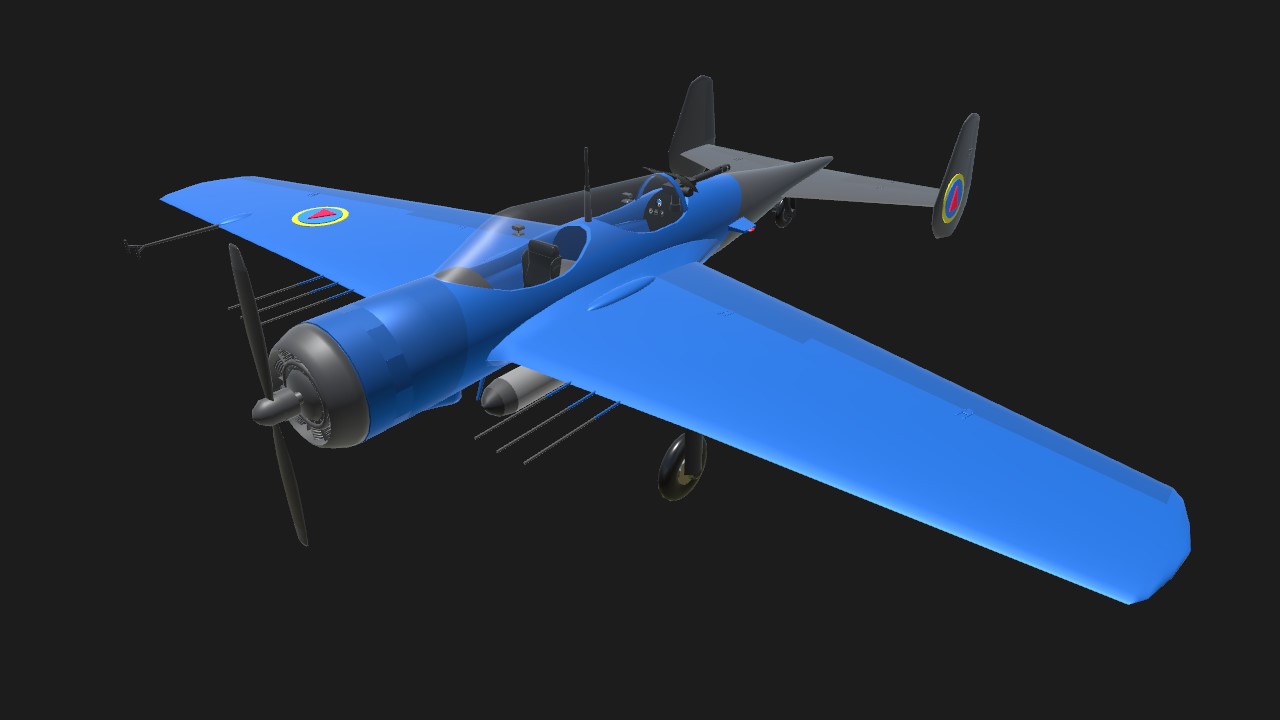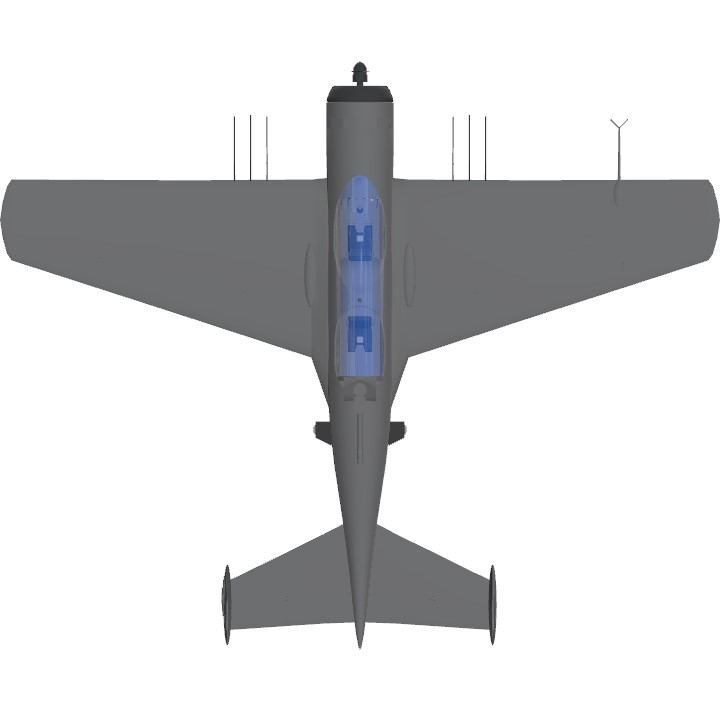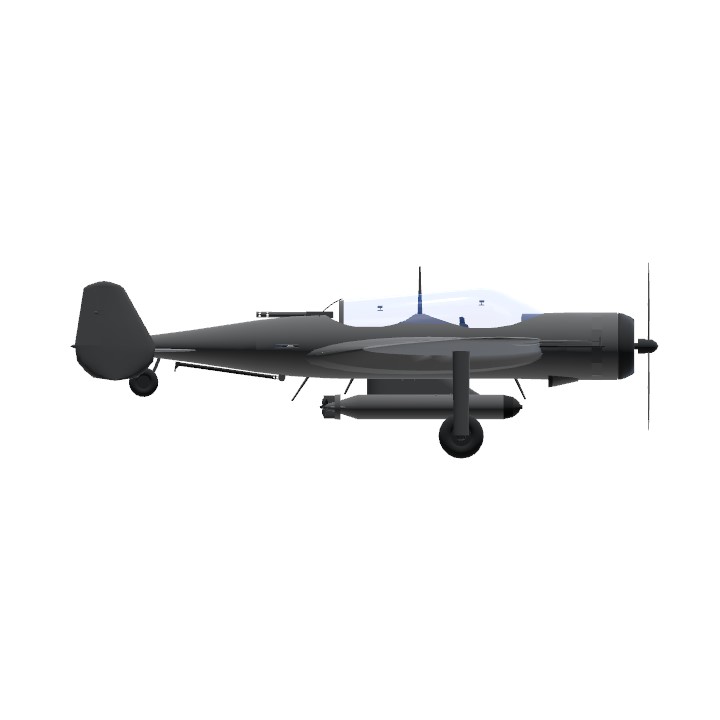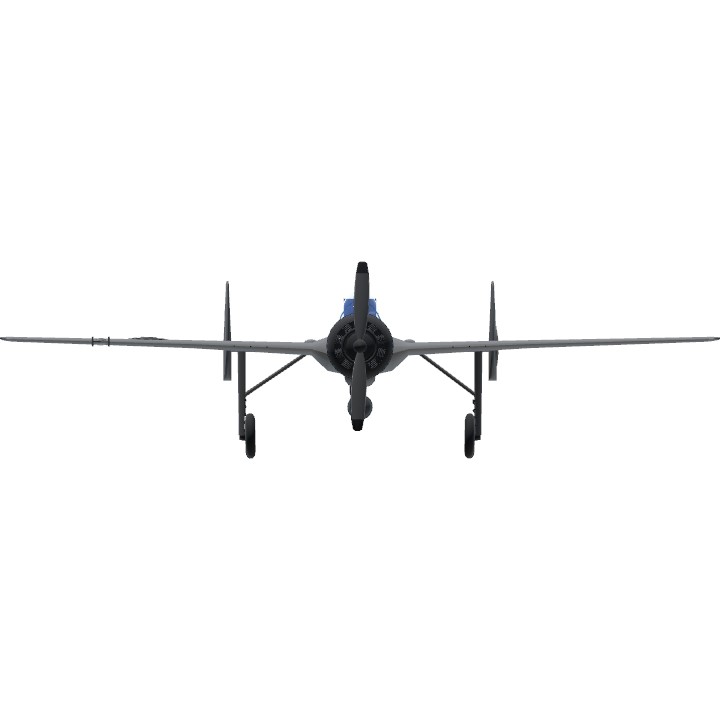Carrier capable Night Fighter and Radio Intercept Aircraft, fitted with a small radar antenna allowing the aircraft to detect targets within 2-4km if and only if they are directly in front of the aircraft within 45 degrees.
Brief Lore:
As new technology developed, a new variant of the Deadalus rolled off the assembly line. Featuring a small radar, along with 'airborne cigars', the aircraft was now capable of radio intercept operations and detection of aerial targets to some extent, giving it a very much needed edge in combat operations.
Unlike previous variants, the D-7 doesn't have bulges on the wings to support the landing gear. The landing gear could now fold into the fuselage, creating less drag, while also looking a lot better being tucked away.
Combined with its speed, maneuverability and versatility, the PG-25D proved to be a powerful platform.
AG1: Arm weapon
AG2: Drop payload
AG3: Detection indicator (green light)
AG4: NAV lights
AG6: Arresting Hook
- Features cockpit lights, gauges and controls, rear gunner view.
Specifications
Max speed: 385 MPH / 619 KPH
Payload: 1x 250lb / 113kg Mk. VI Torp
Climb rate: 94ft/minute / 0.47m/s
Max turn rate: 360° in 9.17 seconds (without payload, and turbocharger on)
Armament: 4 wing mounted 17mm cannons, 1x rear gunner 14mm machine gun
Side note: I'm not that great with building props, but I liked how this one turned out for the challenge.
WCU - 1941
Specifications
Spotlights
- FlirBlitz 1.3 years ago
General Characteristics
- Predecessor DL - PG-25D Deadalus
- Created On Windows
- Wingspan 36.4ft (11.1m)
- Length 29.4ft (9.0m)
- Height 9.9ft (3.0m)
- Empty Weight 4,632lbs (2,101kg)
- Loaded Weight 6,959lbs (3,156kg)
Performance
- Horse Power/Weight Ratio 0.135
- Wing Loading 23.5lbs/ft2 (114.8kg/m2)
- Wing Area 296.0ft2 (27.5m2)
- Drag Points 692
Parts
- Number of Parts 224
- Control Surfaces 8
- Performance Cost 1,226




